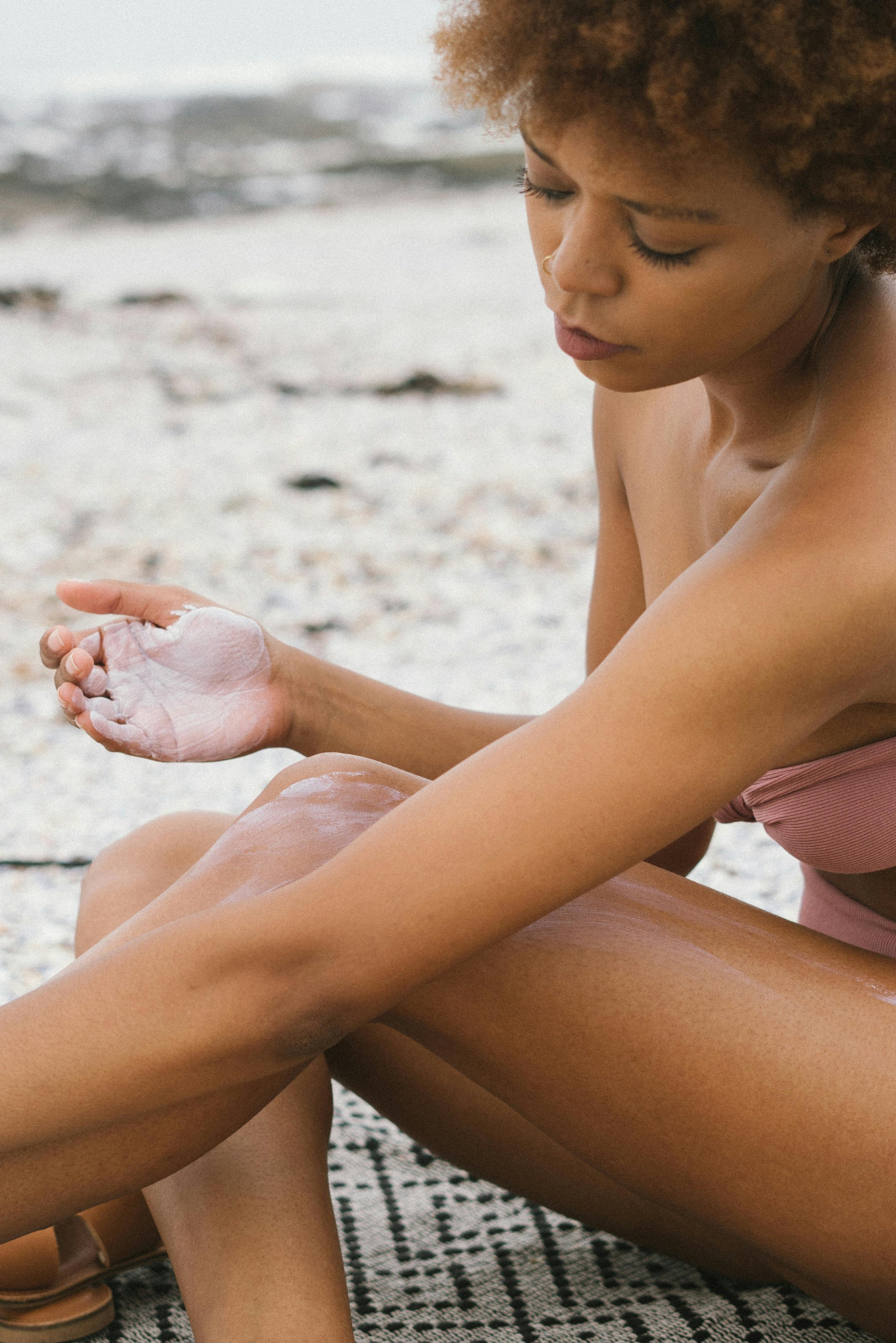Sunscreen Myths: These May Surprise You!
It is definitely SPF season - and in this article for the Aesthetics Edit we compile some of the biggest myths and misconceptions around sunscreen. Cosmetic doctors and dermatologists love to bang on about sunscreen, but you would be surprised to know how many things we all (healthcare professionals included) get wrong!
The bottom line is, of course, wear sunscreen and wear enough of it. But there are some myths that are so ingrained in public consciousness I felt like we just had to set the record straight once and for all.
Myth 1. “Physical (inorganic) and chemical (organic) sunscreens work differently.”
They essentially have the same mechanism of action, absorbing radiation and dispersing it as heat. I’ve seen many claims that physical sunscreen reflects light while chemical sunscreen absorbs it and disperses it as heat, and this is often used as an example as to why physical sunscreen is safer.
But the truth is that physical sunscreens only reflect 10% of UV rays. The other 90% is absorbed, the same as with chemical sunscreens.
Myth 2. “It takes 20 mins for sunscreen to work.”
Nope, regardless the type, it works right away.
The 20 min rule refers to allowing it to dry to give you more even coverage. To that end, we usually recommend that you give yourself at least this amount of time before applying make-up in the morning or going into the pool to avoid smearing your SPF.
Myth 3. “Chemical/organic sunscreen is not coral-safe.”
On the list of things that cause coral bleaching and are a threat to the environment, SPF is pretty insignificant. That’s not to say that there is no potential to cause harm if you are swimming directly in a coral reef - just that the potential is miniscule compared to all the other threats. So unless you are going to be swimming in reefs (in which case using a physical sunscreen may be preferable) don’t feel that you aren’t allowed to use chemical SPFs when you go to the beach.
Myth 4. “DIY sunscreens work.”
Please, just don’t.
And please don’t sell people this stuff and make money off of them.
Myth 5. “Only wear sunscreen when it’s sunny.”
While UVB varies and is strongest in the summer, UVA is fairly consistent year round. Protect your skin!
Myth 6. “A little goes a long way.”
Just wear an appropriate amount of SPF. Celebrities recently have been awful in giving completely inaccurate or inappropriate sunscreen advice. You need at least 1/4 teaspoon for your face, and at least 1 teaspoon per body area (a leg, an arm, your front, your back, etc.)
Or see your doctor in melanoma clinic in 20 years. Either way! 🤷🏻♀️
Myth 7. “There are carcinogens in chemical SPF.”
Nope, but know what gives you cancer? A lot of sun exposed to UV radiation. We’ve covered this more extensively in our article on the sun, so feel free to read more details there.
Myth 8. “SPF is enough.”
No, babe. You cannot go sunbathe now with impunity. Sun protection is not just about SPF. If you want to protect your skin seek shade during the hottest parts of the day, wear a hat and sunglasses, and minimise unnecessary sun exposure.
Wearing sunscreen unfortunately doesn’t then mean we can do whatever we want in the sun.
Myth 9. “SPF 50 is only 1% better than SPF 30.”
This comes from looking at sunscreen protection in the wrong way. You will often hear numbers like SPF 30 blocks 97% of UV radiation, and SPF 50 blocks 98% of radiation, therefore it’s only slightly better.
But what you should focus on is how much radiation is being allowed onto your skin. If you look at how much radiation it doesn’t let through, SPF 50 is twice as good as SPF 30.
Myth 10. “I can get good advice from celebrities and influencers.”
I wrote a piece for Glowday about why celebrities drive me crazy when it comes to giving out advice or talking about aesthetic treatments. Please only get medical skincare advice from healthcare professionals and scientists.





















When it comes to skincare, acids have long been the stars of the show—think glycolic, salicylic, and hyaluronic acids. These tried-and-tested ingredients have earned their reputation for addressing common skin concerns such as acne, wrinkles, and dryness.
But did you know there are lesser-known acids that are starting to make their mark in the skincare world? While some have been used for centuries, others are still emerging in research. In this blog, we’ll introduce you to some skincare acids you may have never heard of, discuss their potential benefits, and help you decide whether they should make their way into your routine.